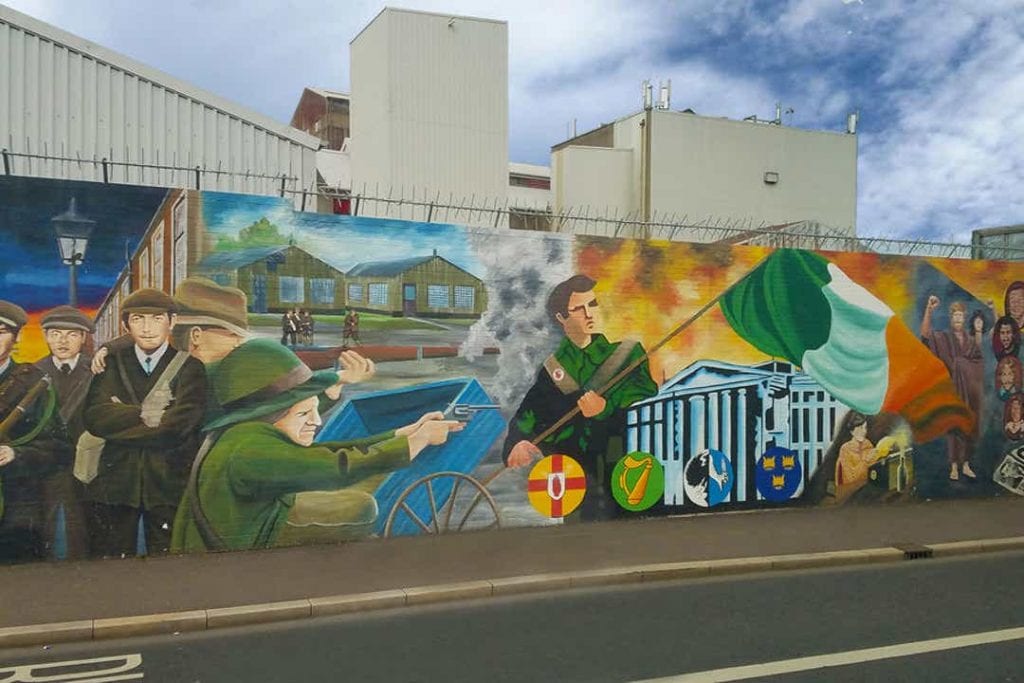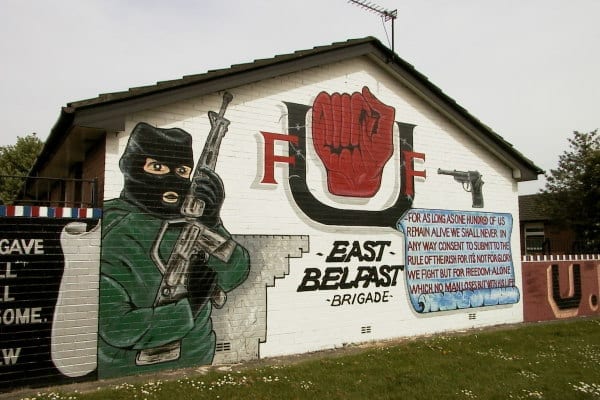Walking around Northern Ireland, but particularly Belfast, you cannot help but notice the multitude of murals across the city. Whilst there are so many, I don’t think this article can credibly suggest ‘which is the fairest of them all.’ Nor can the murals’ narrative be seen as a fairy tale. But it will certainly highlight a growth in the new artistic mural depictions. Throughout history, Belfast murals typically portray nationalist and unionist individuals and events of Anglo-Irish political and religious struggles. Depending on community loyalties, the illustrated individuals are largely seen as heroes of their past and present. However recently, following the Covid-19 lockdown and Black Lives Matter movement, murals have begun to depict new visions and current heroic efforts. NHS workers, Sir Captain Tom Moore and George Floyd are just a few of the latest installations into an already vibrant artistic group of communities.
This makes us question what is a hero in 2020? The dictionary definition is “a person who is admired for their courage, outstanding achievements, or noble qualities.”
Therefore, we must question are supposed heroes of the past as relevant in illustration now as they once were?
I guess that is for you to decide.
For the most part, these murals usually depict people of significance which some would argue are timeless heroes. Consequently, it is heavily divisive to suggest which mural ‘is the fairest of them all,’ but I can infer that Belfast is willing to incorporate a new definition of ‘hero.’ In recent history, murals have begun to depict individuals and events external to the island of Ireland i.e. Nelson Mandela and the Arab-Israeli conflict. So, the incorporation of current events are not alien to this growth of community art. However, it does remain the case that most murals show nationalist and unionist men and women, and probably will for some time. But that does not indicate new depictions lack appraisal, if anything, they add to a new sense of ‘hero’ identity, and the value of growth and change in the present.
Murals in Belfast have historically been used as a form of identity. It has consistently been an artistic method to portray and instil messages, of its time, to communities. It is safe to say, in terms of nationalism and unionism, you will know which part of Belfast you are in because of this.
If you head over to west Belfast (a predominantly nationalist area), you cannot miss the brightness of the Irish tricolour flag exuding from the brick buildings. Nor on the east of Belfast (the majorly unionist area) can you miss the vibrant redness of the Ulster Hand and Union Jacks. Some murals, for both sides, have members of their organisations adorned in balaclavas, dark uniforms and weapons, all with piercing gazes.
There is no argument that they are heavily biased creations from either side. But what is art if it is not biased?
Art makes us question what we are looking at.
That is why the latest installations, portraying NHS workers and George Floyd, show a flavour of new artistic visions. Professor Peter Shirlow of the University of Liverpool notes this as an “important cultural moment” in recognising what communities now want to depict on their walls. Painted on the International Wall (commemorating those from around the world) which divides the west and east of Belfast, the blue of the NHS mural is striking. On the west side of the wall, George Floyd is portrayed and in east Belfast, on the side of a house, Sir Captain Tom Moore is depicted. These installations are largely symbolic of how Belfast is modernising and blending its infamous murals with current events. There is a growing sense of looking beyond personal historic struggles to acknowledge present-day international discord. Indeed, this creates a sense of unity which communities, nationalist and unionist leaders have begun to exhibit more of during the Covid-19 pandemic.
In conclusion, the narrative of the murals in Belfast is no fairy tale at all. But it is a tale of transformation worth telling. For a city with a divisive religious and political past, the vibrancy of the murals have consistently developed the notion of what a ‘hero’ is. Most importantly, the murals facilitate a space for discussion in determining what a ‘hero’ means in today’s world.
Words by Lisa McGrady





